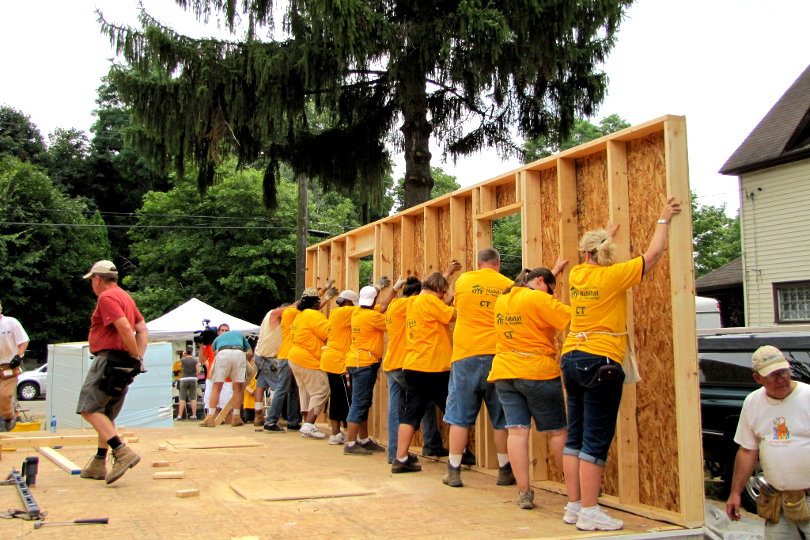Today’s economic challenges have led to a situation where more affordable housing is needed. Many people have found themselves unable to afford their rent or mortgage, and while there are temporary provisions in place to prevent foreclosure and eviction, it is likely that many people’s financial situation will not improve to the point where they will be able to afford their current homes.
The gap between rich and poor is growing steadily in the United States, and resources that were once devoted to lower-income housing are being siphoned off for other purposes. This means that there are significant gaps in the affordable housing market and that many people are looking for low-income housing in vain.

Jawdat Abulhaj, a student and community volunteer from North Carolina, delves into the world of affordable housing, explaining how developers can help low-income families become homeowners.
Affordable Housing Statistics
In North Carolina, where Abulhaj currently lives, there is a significant gap between the wages paid to low-income employees and the funds needed to rent a modest home at the fair market price. North Carolina’s minimum wage is set at the federal minimum of $7.25 per hour. In general, renters need to make at least $15 per hour in order to afford a modest one-bedroom rental. This is clearly an untenable situation for many people in the state.
Nationally, affordable housing is difficult to arrange. Many renters are forced to pay more than 30 percent of their income in rent. Even high-income earners in expensive areas may struggle with affording their rent. Government programs are available to help these renters, but many people may not qualify for the programs due to their income being too high on paper.
The reason why rents have become so unaffordable is that rental prices have outpaced wage growth by 40 percent since 1960. Wages have remained nearly static, while the percentage of people whose rent leaves them cost-burdened has skyrocketed.
The Importance of Developers
Jawdat Abulhaj has worked as an intern in the housing and financial fields. He understands the role of developers in promoting affordable housing and why they should consider contributing to the community by building low-income projects.
The Gap Between Costs and Revenues
One of the reasons why developers balk at building affordable housing is that the costs for such projects are generally higher than the expected rental price. This means that developers interested in building low-income housing are often interested in government incentives. Many state and local governments, as well as the federal government, do offer financial incentives for developers of affordable properties, but these incentives may not be enough to convince them to embark on the project.
The federal Low-Income Housing Tax Credit or LIHTC supports the purchase, construction, and rehabilitation of affordable rental housing. The program has helped to construct over 100,000 rental units every year since the mid-1990s. While this program has helped a great deal with bringing affordable housing to the people, there remains a significant gap between the number of people who need affordable housing and the number of housing units that are actually being constructed.

Possible Solutions for the Low-Income Housing Problem
Community volunteer organizations like Habitat for Humanity have made an impact in the number of housing units available to low-income families. Habitat for Humanity has helped over 29 million people receive new or improved housing in countries throughout the world. Habitat for Humanity is an excellent opportunity for a student to learn what it means to be an active and caring member of the community.
One of the most exciting ways for states and cities to secure the funding needed to build affordable housing is the housing trust fund. Cities and states contribute to these projects in order to help their residents find safe and affordable places to live.
Another way to fund affordable housing is to hold bond elections on the state and local level. Municipal bonds are a good way to raise money and to acquire the land needed for housing development.
States and cities can offer tax breaks and incentives over and above the federal LIHTC program mentioned above. Developers are more likely to build affordable housing when they are offered free land, fast-track permitting, and favorable zoning.
Zoning is one of the major concerns for affordable housing. Zoning can often prohibit affordable projects from being built. “Not-in-my-backyard” local residents can be a problem as well. State and local governments should practice the waiving of certain zoning rules that make it difficult to build low-income housing.
Helping the Community
As a student and intern, Jawdat Abulhaj has made a full examination of the difficulties faced by states, cities, and counties when it comes to encouraging the building of affordable housing. Developers need to be assured that they will be able to stay in business after building an affordable project. State and local tax incentives, as well as the federal Low Income Housing Tax Credit, can help to encourage them to do their part.




